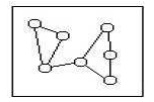Chapter: Mechanical : Total Quality Management (TQM) : TQM Tools & Techniques
New management tools
New management tools
Seven New Management and
Planning Tools In 1976, the Union of Japanese Scientists
and Engineers (JUSE) saw the need for tools to promote innovation, communicate
information and successfully plan major projects. A team researched and
developed the seven new quality control tools, often called the seven
management and planning (MP) tools, or simply the seven management tools. Not
all the tools were new, but their collection and promotion were. The seven MP
tools, listed in an order that moves from abstract analysis to detailed
planning, are:
1. Affinity
diagram: organizes a large number of ideas into their natural relationships.
2. InterRelations
diagram:
shows cause-and-effect relationships and helps you analyze the
natural links between different aspects of a complex situation.

Tree diagram: breaks down broad
categories into finer and finer levels of detail, helping you move your
thinking step by step from generalities to specifics.

4. Matrix
diagram: shows the relationship between two, three or four groups of
information and can give information about the relationship, such as its
strength, the roles played by various individuals, or measurements.

5. Matrix
data analysis: a complex mathematical technique for analyzing
matrices, often replaced in this list by the similar prioritization
matrix. One of the most rigorous, careful and time-consuming of decision-making
tools, a prioritization matrix is an L-shaped matrix that uses pairwise
comparisons of a list of options to a set of criteria in order to choose the
best option(s).

Arrow diagram: shows the required order
of tasks in a project or process, the best schedule for the entire
project, and potential scheduling and resource problems and their solutions.

7. Process decision program chart (PDPC):
systematically identifies what might go wrong in a plan under development.

Related Topics